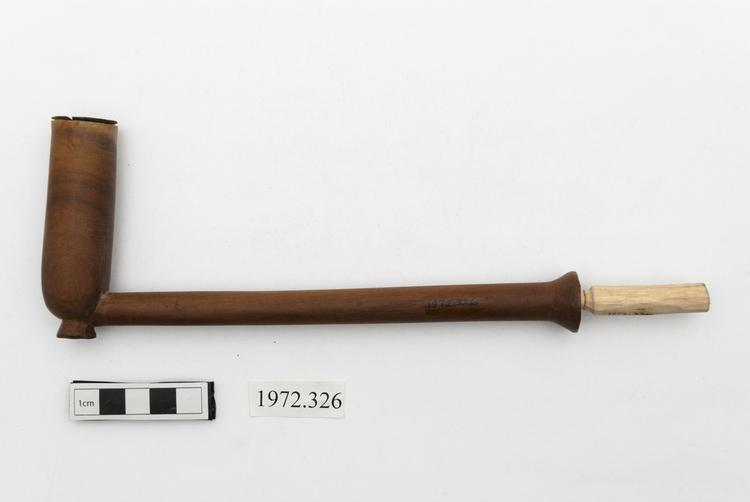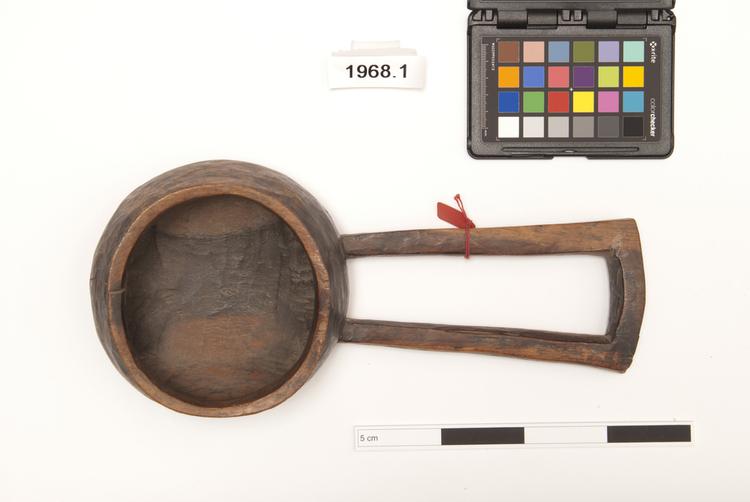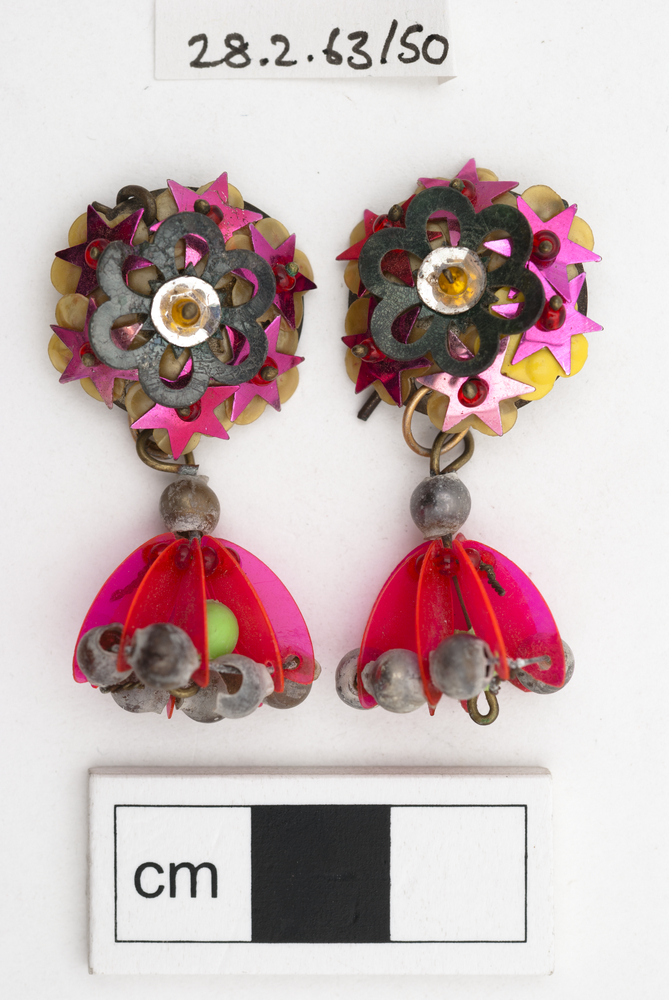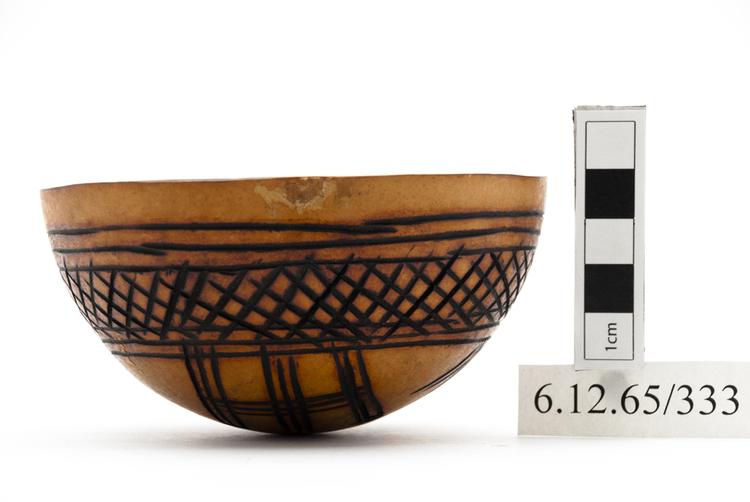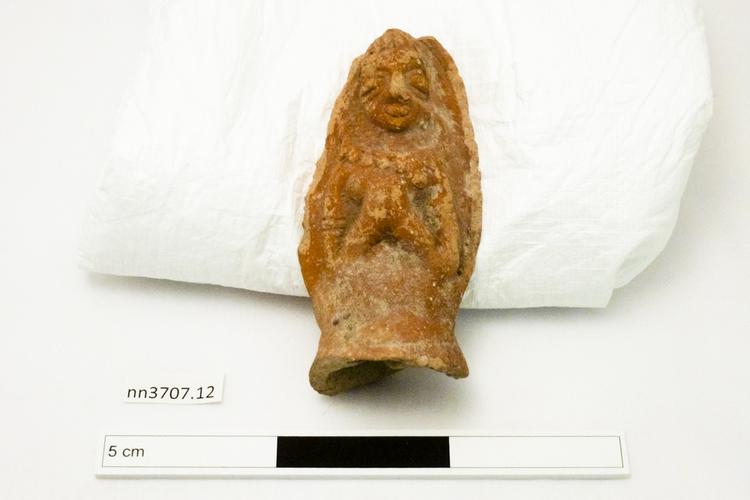
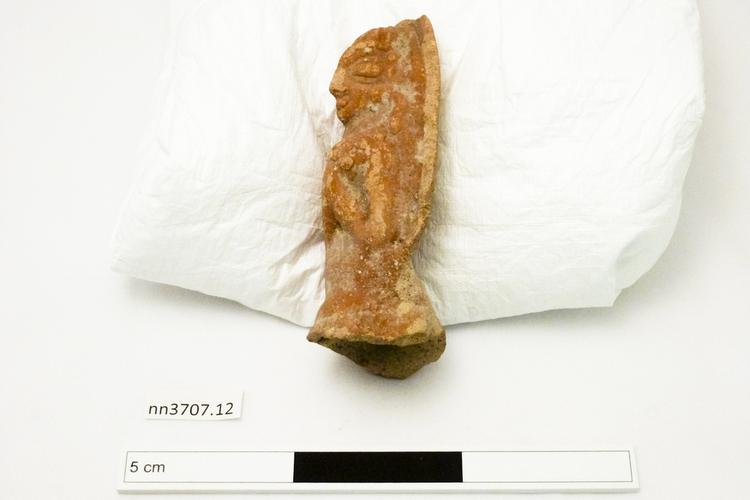
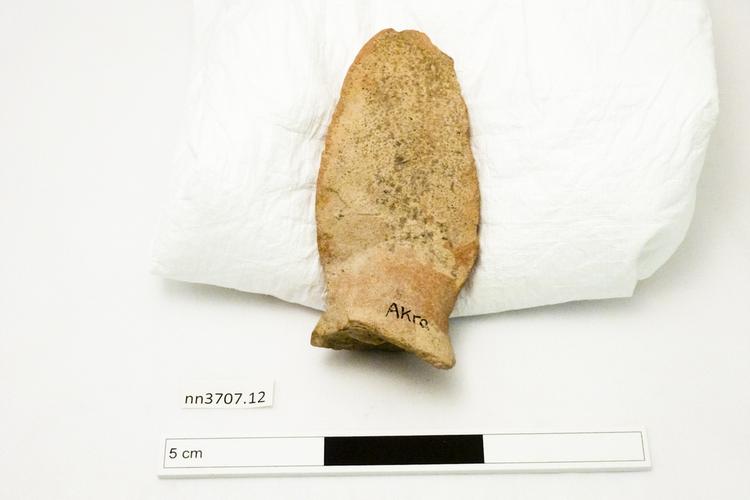
'Akra Devi', a standing female figurine, adorned with bangles and a heavy beaded necklace, in coarse pottery with a dark red slip, standing without feet in an oval frame, hands raised in Añjali Mudrā. The back is flat and plain and the base concave and exhibiting broken edges.
An 'Akra Devi', a standing female figurine, adorned with bangles and a heavy beaded necklace, in coarse pottery with a dark red slip, standing without feet in an oval frame, hands raised in Añjali Mudrā. This last characteristic is very common in the Akra Devi range, but some of these devis have their arms by their sides. The back is flat and plain and the base is always concave and exhibiting broken edges as here. It is likely that this figure was arranged standing, in a row of others, on the shoulder of a large pottery vessel (see Khan, Knox and Thomas, 2000). These items are known only from Akra and adjacent sites in the Bannu area, and have never been discovered in a strictly dateable archaeological context. The piece is marked on the back with 'Akra', a great ancient city site in Bannu district of Khyber-Pakhtunkhwa, Pakistan, about 110 miles south of Peshawar. The origins of Akra are iron age, through the Achaemenids, and all that follow, to its demise in the 10th century under Mahmud of Ghazni. Archaeological context: presumably unstratified and from a surface collection. These pieces are difficult to date and may be as late as the 3rd to 5th centuries, though it is argued that there is a sequence detectable in the corpus ranging from the early more sophisticated types to the later less well made. Given by Col D H Gordon (1952/3).



